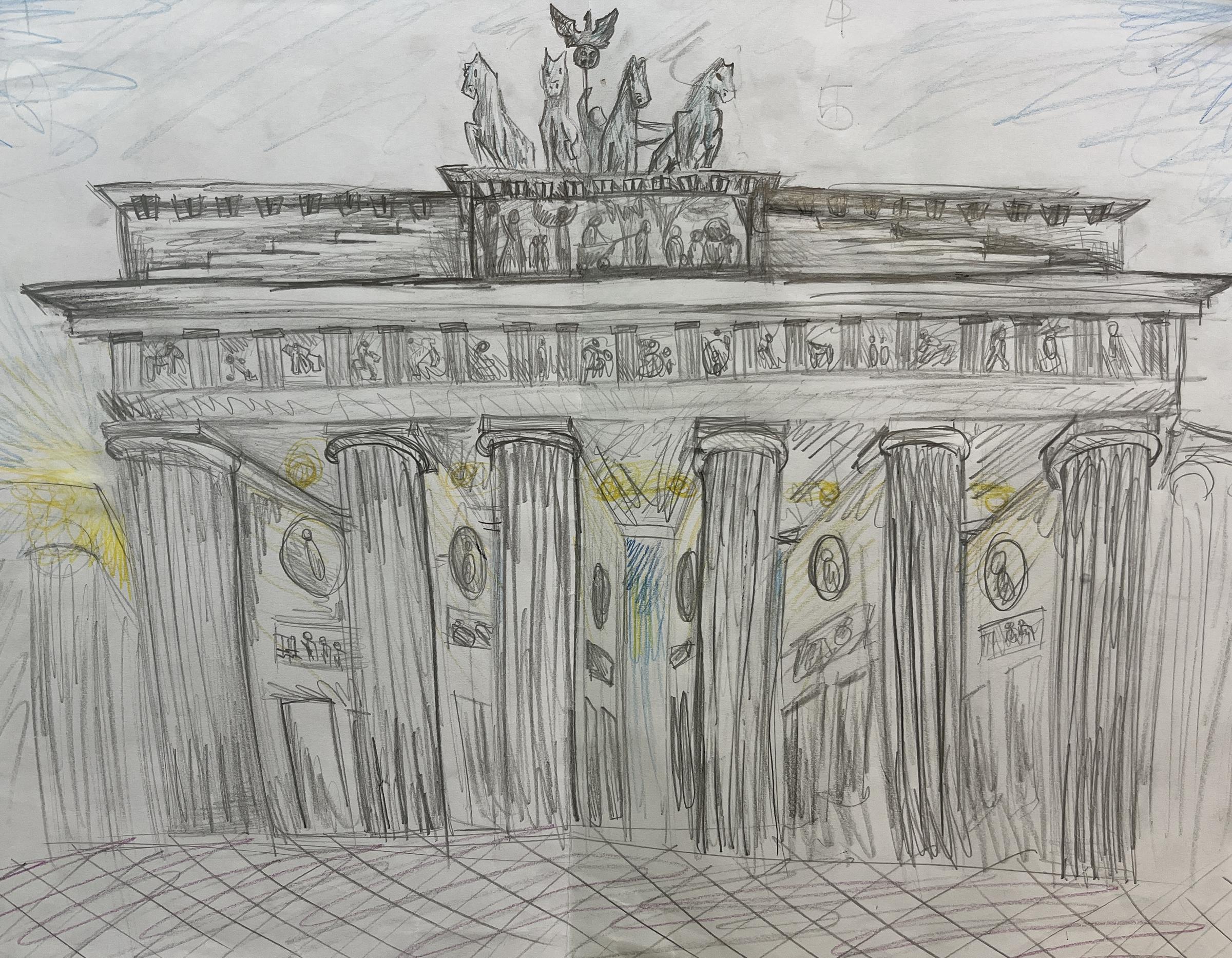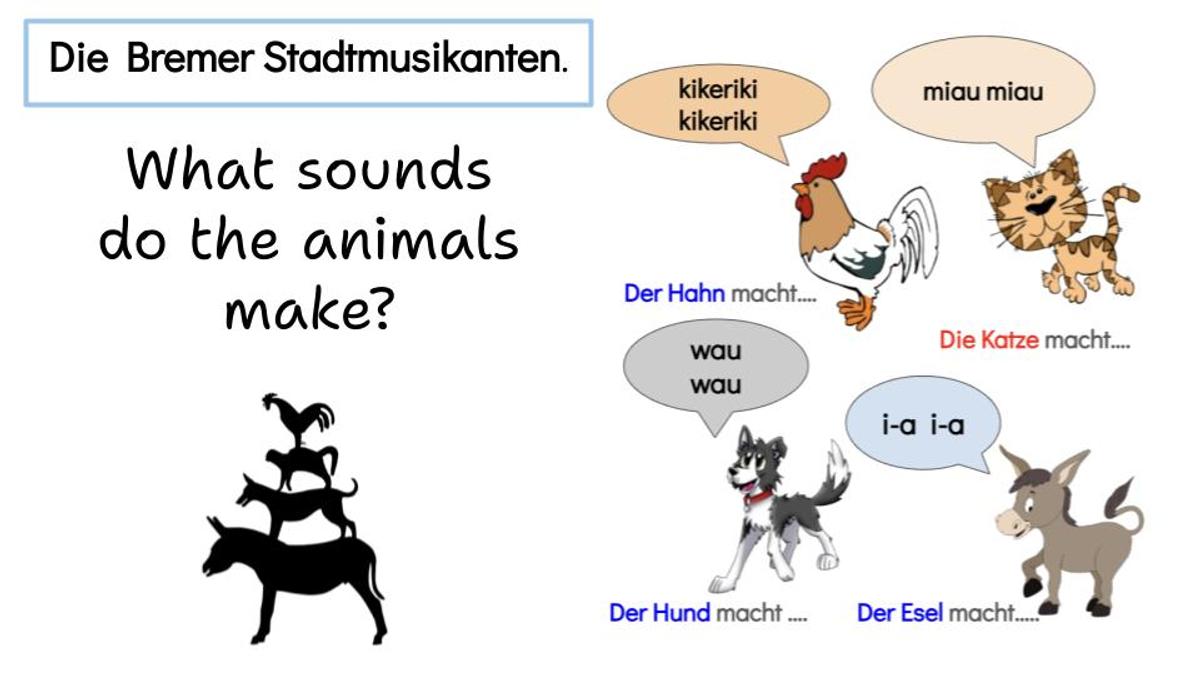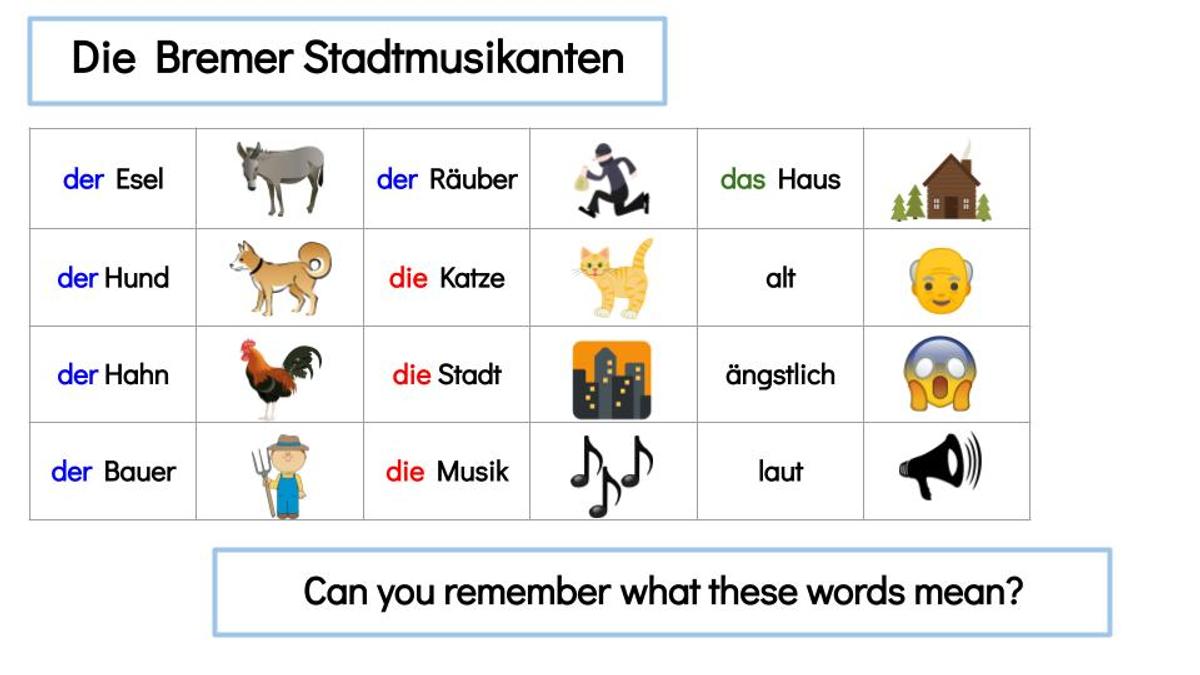Deutsche Ecke
R-5 Libby Edwards
Yrs 3-6 Emma Chesterman

Deutsche Ecke
R-5 Libby Edwards
Yrs 3-6 Emma Chesterman
When we use words to imitate a sound, it is called onomatopoeia. Think BATMAN -POW! CRASH! BOOM! WHACK! or Rice Bubbles Snap! Crackle! Pop! These words not only name the sound but also sound like that sound.
The word onomatopoeia comes from the Greek ὀνοματοποιία—a compound ofὄνομα (ónoma, "name") and ποιέω (poiéō, "I make"). The term was coined by the Greek philosopher and scientist Aristotle!
This term Mellor students read the famous German story of the Die Bremer Stadtmusikanten, The Bremen Town Musicians. They have learned about the Grimm brothers and the location of Bremen in Germany as well as focussing on vocabulary from the story including the 4 animals, der Esel (the donkey), der Hund (the dog), die Katze (the cat) and der Hahn (the rooster).
One of the most fun and interesting parts of our learning was exploring the sounds that animals make and discussing that the sounds are different in German to what we say in English. You may be surprised to find that animal noises change depending on the language being spoken. It's not that animals are multilingual, but the people who describe them are.
In German, der Esel macht “I-A, I-A”, der Hund macht “Wau wau”, die Katze macht“Miau Miau” und der Hahn macht “Kikeriki, Kikeriki”
“Das Kleine Küken Piept” is one of our favourite songs which shares the German sounds many animals make.
Mykhaylo Zakryzhevskyy and Alexander Mendes in their article “Do cats "meow" in every language?” comment that presumably the sound of a cat in Greece is basically the same as a cat in Pittsburgh, or ones on the streets of Rio, or those guarding the pyramids in Giza. So why don't all languages represent those meows in the same way?” They tell us that “how languages represent animal sounds can teach us a lot about pronunciation in different languages. Animal sounds are a kind of onomatopoeia.
Every language uses its own set of (human) sounds in its words, and each language also has particular rules about how to combine sounds and where they can go in words. For example, words in Spanish never start with the combination "sp" (they have to have an "e" before the "s"), and even though English speakers can make a"ng" sound in the middle or at the end of a word, no English words start with this sound.
These sound rules also shape the way languages represent animal sounds! The language you speak also shapes which sounds you hear, and how you imagine animals sounding when they make noise. So the way a language represents the noise a pig makes can tell us about what sounds exist in that language and how they form words!"
This just shows, we are always going deeper with our learning to ask questions, explore further and find out how it fits into the world around us.
Frau Edwards
elizabeth.edwards559@schools.sa.edu.au
Frau Chesterman
emma.chesterman773@schools.sa.edu.au
Reference Mykhaylo Zakryzhevskyy and Alexander Mendes
“Do Cats ' Meow’ In Every Language?”
https://blog.duolingo.com/animal-sounds-in-different-languages/



